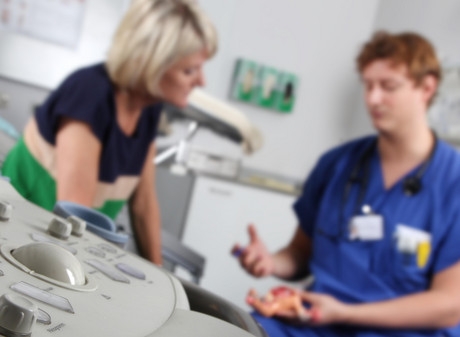Human papilloma viruses, or HPV for short, are among the most common viruses transmitted through intimate contact. To date, more than 200 types of virus are known. Some of these viruses are responsible for the formation of benign genital warts, other types are significantly involved in the development of cervical cancer and other types of cancer of the vulva, vagina, anus, the oropharynx or the penis. That’s right, the virus can also pose a cancer risk in men.
Risk of contagion
Human papilloma viruses (HPV) are widespread. They are pathogens that can cause inflammation and skin changes. Some only occur in humans. They are therefore called human papilloma viruses (HP viruses or HPV). They penetrate the skin or mucous membrane, presumably through small cracks or injuries, and multiply there inside the cells. HP viruses are transmitted through direct contact with affected areas of the skin or mucous membranes.
Almost all people become infected with HPV at some point in their life. Girls and boys as well as women and men can be affected. Human papilloma viruses are transmitted from person to person through direct contact. The infection does not occur through body fluids such as blood, semen or vaginal fluid, but through skin and mucous membrane contact, i.e. direct contact with infected skin and mucous membrane areas. Transmission in a non-sexual way is also possible, but rarely occurs. An example is transmission from mother to child at birth. Contagion without contact with the mucous membrane does not seem to be possible.
The different types of HPV influence the risk of cancer. Certain types of HPV often settle in the cells of the mucous membrane on the cervix, in the transition area between the vagina and the cervix. Here they can lead to tissue changes (dysplasias). A malignant tumor can develop from a tissue change over the years. However, that rarely happens. Twelve types of virus are considered certain to increase the risk of cancer of the cervix (cervical cancer). The most important are HPV 16 and 18. They are also most commonly detected in tumor tissue.
Early cancer detection
Cervical cancer is the fourth leading cancer and the fourth leading cause of cancer death in women, with an estimated 604,000 new cases and 342,000 deaths worldwide in 2020. The goal of cancer screening tests is to identify cancer before it develops or before it becomes uncomfortable.
Cancer screening for cervical cancer
Every woman between 20–34 years in Germany can go to the gynecologist once a year free of charge for early cancer detection, i.e. for examination for cervical cancer and its preliminary stages. From the age of 35, women are offered a combined examination (co-testing), consisting of a Pap smear and an HPV test, every 3 years.
Pap test
The so-called “Pap test”, a cell swab from the cervix, is the most important examination for early cancer detection. The aim of this investigation is to detect cell changes in the cervix. This increases the chance of identifying and treating precancerous lesions — even before cervical cancer develops.
HPV test
In addition to the Pap test, the HPV test can also be used for the early detection of cervical cancer. With the HPV test, possible cancer precursors may even be better discovered. An HP virus test (HPV test) can be used to find out if a woman is infected with HPV and therefore at increased risk of developing cervical cancer. However, the HPV test itself cannot detect cell changes. Therefore, if the result is abnormal, the Pap test and possibly further examinations are necessary.
Treatment options
Treatment for cervical cancer depends on the stage of the tumor. In the early stages, a small operation (conization) is often sufficient and / or other fertility-preserving operations such as trachelectomy (removal of the cervix and surrounding tissue) are possible. A major operation (radical removal of the uterus and the lymph nodes in the pelvis) is necessary if the tumor is already larger and may have spread to the surrounding tissue. Here, the protection of the bladder and intestinal nerves is of great relevance.
So far, there is no treatment that can fight HP virus directly.
Vaccination is the best prevention
Vaccinations can offer protection against certain infectious diseases and have led to diseases such as polio no longer occurring in Europe. HPV is widespread and can lead to certain precancerous stages and cancer, among other things. There are around 60,000 cases of HPV-related cervical cancer precursors and around 7,000–8,000 cancers in women that are caused by HPV each year. Vaccination against HPV can protect against the possible consequences of infection with certain types of HPV. The experts of the STIKO (Standing Vaccination Commission) recommend vaccination for girls and boys between 9 and 17 years, ideally before a possible infection with HPV.

